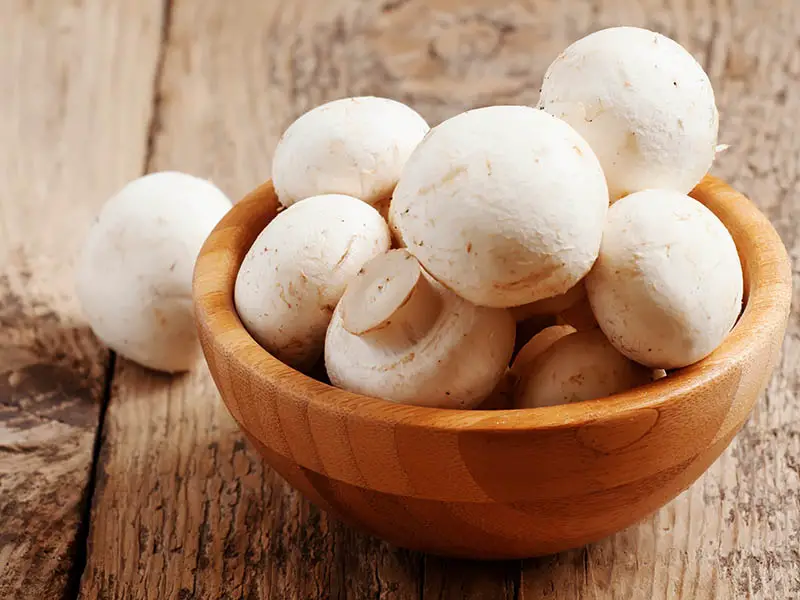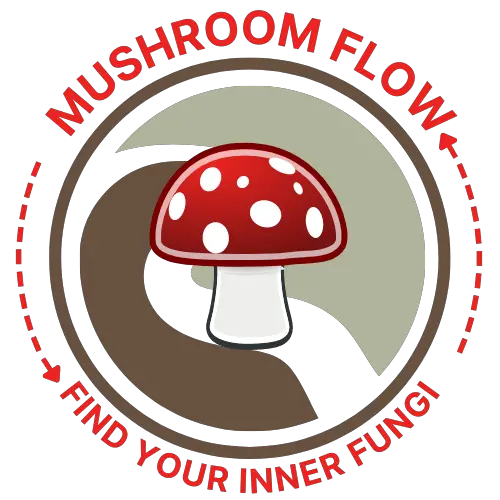It isn’t cheap to purchase and keep produce fresh, and mushrooms are no exception. It’s frustrating when after buying fresh mushrooms they spoil before getting a chance to eat them. But what causes white mushrooms to brown?
White mushrooms turn brown after exposure to the air, either by cutting, bruising, or aging. The cause of mushroom browning is an enzyme, called tyrosinase, which is already inside its cell walls before spoiling begins.
Let’s dig a little deeper into the cause of mushroom browning, how to identify spoiled ones, how to slow the spoiling process, and tips to preserve them.

What Causes White Mushrooms to Turn Brown?
Mushrooms, just like any organic matter, will break down over time. Many processes and microbes take part in mushroom decomposition.
According to a study cited by Science Daily, Browning is caused by an enzyme known as tyrosinase. This enzyme is contained in the mushroom’s cells, and will only activate when exposed to oxygen.
When tyrosinase is exposed to oxygen, it will start a chain reaction. This process will degrade the appearance and nutritional value of your mushrooms, so it’s important to try to prevent this for as long as possible.
How to Identify if White Mushrooms are Spoiled?
Mushrooms are a tasty treat, for us and many microbes. So what are some ways to tell if white mushrooms have gone bad?
Bacteria
Bacteria, in particular, love to munch on mushrooms. They like mushrooms so much that they multiply to share the meal with all of their clone buddies.
The bacteria’s rapid cloning causes the mushroom to become moist and slimy. If you have slimy mushrooms, it’s time to toss them in the garbage.
Fungi
You know it’s bad when your mushroom starts growing mushrooms. Mushrooms can be a snack for molds and other forms of fungi. You will know that you have a fungal infection if you start to see the fuzz on your mushrooms. The fuzz will usually be in a circular pattern since the hyphae of fungal networks grow radially.
Dehydration
Mushrooms are supposed to be plump and springy. If they start to become wrinkled and squishy your mushrooms may be starting to lose their internal moisture. If the process is just barely starting to happen, you will need to use them that day, or else they will be inedible.
Odor
Another tell-tale sign that your mushrooms are no longer good to use is if they have a distinctive smell. White mushrooms are meant to have a very subtle odor. You shouldn’t be able to smell mushrooms unless you intentionally sniff them.
Any sort of strong odor from raw mushrooms shows that something else has been snacking on your mushrooms.
How to Keep White Mushrooms from Browning?
Once you understand a little more about how and why white mushrooms turn brown, it becomes easier to slow the process.
Because tyrosinase is activated by exposure to oxygen, limiting the exposure of the mushroom to air can help prevent browning.
Whenever a mushroom is cut or damaged, there is a chance that the cell walls can be injured, freeing the tyrosinase. If structural damage to the mushroom occurs, browning will soon follow.
This means that the shelf life of cut or damaged mushrooms is considerably lower than mushrooms handled with care. So, if you cut up mushrooms or buy pre-cut mushrooms expect to use them soon (within a day or so).
Whole mushrooms handled with care can last up to a week, but it is important to remember that this timeline can vary depending on how long the mushrooms have been sitting on the grocery shelf. Read on for more tips on preserving white mushrooms.
Prevent Moisture
Moisture helps bacteria and fungi grow and feed on mushrooms, making it vital to keep raw mushrooms dry. When you prevent moisture from forming on the mushroom surface, you keep a necessary resource away from harmful microbes.
Keep Mushrooms Cool
Microbial growth relies on chemical reactions, like any form of life. It is well known that refrigerating produce keeps it fresher for longer, and that is because chemical reactions begin to slow down at cooler temps.
Bacteria can still live and reproduce, but they can’t do it as quickly. Dead tissue will inevitably break down, but enzymes that decompose are slowed by chilly temps.
Avoid Damage
When the cell walls of mushrooms are damaged, it becomes a lot easier for microbes to invade or chemicals within the cell walls to begin breaking down. If that wasn’t enough, a lot of the utensils we use to cut our food are laced with fungi or bacteria that are ready to infect your mushrooms.
Make sure to avoid bumping your mushrooms around too much and prepare to eat mushrooms soon after they are cut.
Dehydrate Mushrooms
One way you can help your mushrooms last longer is by dehydrating them. Dehydrating mushrooms removes all of the internal moisture. This considerably increases the mushrooms’ shelf life. You can keep dehydrated mushrooms around for nearly a year.
Microbes find it hard to eat dehydrated mushrooms because they contain no moisture. Dehydrated mushrooms can be put in soup broths or other meals, adding their delicious flavor and nutrients.
Freeze Mushrooms
Just like dehydrating, freezing your mushrooms can extend their shelf life. Frozen mushrooms only last about 3 months, not as long as dehydrated mushrooms, but only requires a freezer, an appliance many families have and can be more versatile than dehydrated mushrooms.
Final Thoughts
Mushrooms are a delicious and nutritious food that we do not want to let go to waste. White mushrooms can start browning due to the enzyme known as tyrosinase. This process will eventually happen but can be postponed by keeping mushrooms dry, and chilled and handling them with care.
Many microbes want to eat our mushrooms. The best way to avoid this is by keeping them dry and cool. Best of luck in your mushroom culinary adventures!
